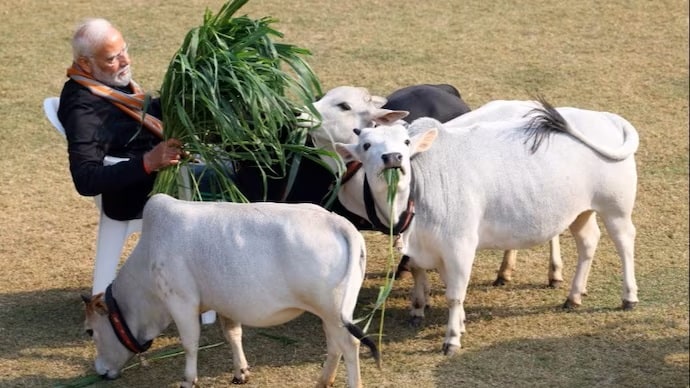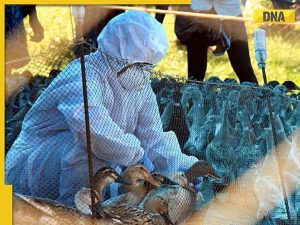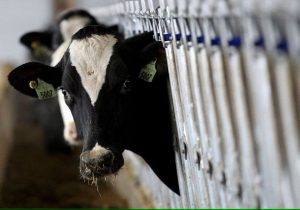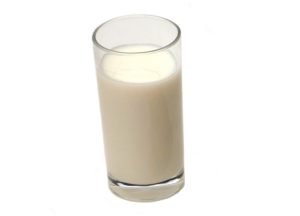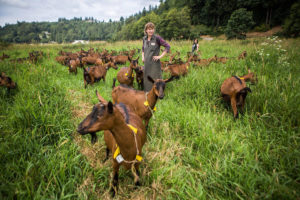Photos of PM Narendra Modi with cows on Makar Sankranti went viral on social media. People wondered where the “cute” cows were from. Here’s all you need to know about Punganur cows, which are considered a ‘goldmine’.
People were left amazed at the “cute cows” that Prime Minister Narendra Modi caressed and fed. Some even refused to believe that the cows, from a dwarf breed, were from India. The cows are from an indigenous breed and by sharing the photographs, PM Modi was also trying to send out a message.
PM Narendra Modi was seen celebrating the harvest festival of Makar Sankranti with a few ‘cute’ cows on Sunday, January 14 at his residence at Lok Kalyan Marg, New Delhi. Images of PM Narendra Modi caressing and feeding cows for ‘Makar Sankranti’ on Sunday went viral.
‘Gau Seva’ (taking care of cows) is also a part of the 11-day ritual that PM Modi is observing for the ‘Pran Pratishtha‘ (consecration) of the idol of Lord Ram at the Ram Mandir in Ayodhya. The ceremony will mark the inauguration of the Ram temple.
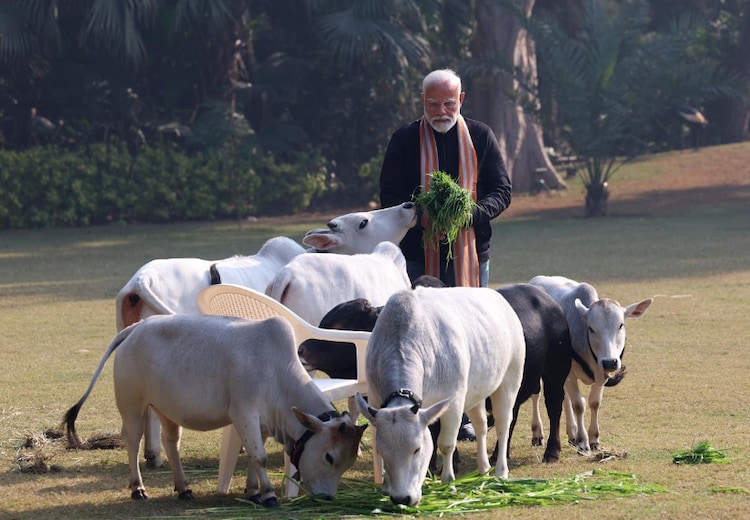
The images of PM Modi petting and feeding the cows with short horns and long thin tails generated a lot of curiosity. People started to speculate on social media about the origins of the breed.
“…Where did they get these cows from? I have never ever seen this kind of cow in India,” reacted an Indian-origin investment consultant based in San Franciso, the US.

Like him, many Indians were left wondering where these cows were from because such cows aren’t a common sight in India. And that is exactly the reason why the photos of PM Modi with the cows have been shared with the public.
Experts confirmed to India Today TV that it was the Punganur breed cows that PM Modi fed on Makar Sankranti.
The Punganur breed from Andhra Pradesh is among the world’s smallest cattle breeds, but yields highly nutritious milk. The experts said that the breed is native to a village by the same name in Chittoor, Andhra Pradesh.
The breed was on the brink of extinction and its numbers are in some thousands.
This is where PM Modi and his messaging come in.
PM Modi, known for conveying subtle messages, be it through his attire and headgear or service at temples or beaches, must have chosen the distinct-looking cows for a reason.
PM Modi has referred to cows as “mother” and conserving indigenous bovine breeds has been his government’s area of focus.
The Rashtriya Gokul Mission was started in December 2014 for the conservation of indigenous bovine breeds. The scheme aims to enhance milk production of indigenous bovines and making dairying more remunerative for farmers in rural India.
The Punganur cows are most likely from among the animals that are kept on the campus of the Prime Minister’s official residence at Lok Kalyan Marg in Delhi.
PUNGANUR COWS AND NUTRITIOUS MILK
The Punganur breed is native to the Punganur municipality in Southern Andhra Pradesh and that’s where the breed derives its name from.
Punganur cows are distinct because of their small size. Cows of the Punganur breed measure between 70-90 cm in height and weigh around 200 kg.
There are a number of YouTube videos of Punganur cows inside small apartments and houses. Some even show the small cows sharing beds with people.
The cows’ “cuteness”, attributed to their appearance, consists of their bodies sloping downward from the front to the back with a small hump, long and thin tails almost touching the ground, and slightly curved small flat horns.
The breed’s milk is known for its nutritional value, containing 8% fat compared to the 3-4% found in other native breeds.
WHY PUNGANUR COWS ARE CONSIDERED ‘GOLDMINE’
The problem with the breed started when farmers started indiscriminate crossbreeding of the Punganur cows with other breeds to boost milk yield.
The 20th Livestock Census, 2012 recorded 13,275 Punganur cows in India, against 2,772 of them in 2013.
The Andhra Pradesh Government’s ‘Mission Punganur’, 2020 allotted Rs 693.60 million for the conservation of the breed.
A Punganur cow costs between Rs 1 Lakh and Rs 10 lakhs, based on its age and yield. According to a 2020 report in The Hindu, the urine of a Punganur breed cow is sold for Rs 10 a litre and its dung for Rs 5 a kg. They are used for spraying on crops as insecticides, given their antibacterial value.
Apart from its economic and indigenous values, the cows are revered as a ‘goldmine’ in the region. Many of them are used for socio-religious ceremonies in the temples in the area. Once patronised by the Vijaynagar Emperors, this very breed has long been associated with wealth and prosperity.
Despite all the laurels, the Punganur cows were once on the verge of extinction.
PM Modi, with the cows, not only celebrated the harvest festival but hinted that indigenous breeds of India need to be cared for so that the country becomes self-sufficient in the dairy sector sustainably.
INDIGENOUS COWS IN INDIA
Punganur is just one of the indigenous cow breeds that need attention.
India had 192.49 million cattle population in 2019, out of which 50.42 million belonged to exotic breeds and crossbreeds. The remaining larger chunk of 142.11 million belongs to the Indigenous breeds.
Gir, Sahiwal, Bargur, Onglore, and Kaangayam are a few famous indigenous cow breeds in India.
As of 2018, the Indian Council of Agricultural Research (ICAR) recognised 50 native breeds.
The male population of the indigenous breeds saw a significant dip between 2012 and 2019, while the female numbers saw a slight increase of less than 10 million.
The total population of indigenous breeds fell from 151 million in 2012 to 142.11 million in 2019, with a drop of 6%.
India aims to produce 300 MMT of milk by 2023-24, which was 155 MMT in 2015-16.
Previously, as India looked at increasing milk production, jersey and cross-bred cows were being favoured.
Now, the focus is back on indigenous Indian breeds. It needs people’s active support and can’t remain a government initiative. This might be the very reason why Prime Minister Narendra Modi chose to share photos with Punganur cows.

